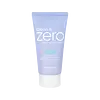What's inside
What's inside
 Key Ingredients
Key Ingredients

 Benefits
Benefits

 Concerns
Concerns

 Ingredients Side-by-side
Ingredients Side-by-side

Water
Skin ConditioningSodium Cocoyl Isethionate
CleansingGlycerin
HumectantButylene Glycol
Humectant1,2-Hexanediol
Skin ConditioningPolyglyceryl-4 Caprate
EmulsifyingCoco-Betaine
CleansingOlea Europaea Fruit Oil
MaskingHydroxyethylcellulose
Emulsion StabilisingSodium Chloride
MaskingEthylhexylglycerin
Skin ConditioningBetaine
HumectantSodium Nitrate
SoothingEucalyptus Globulus Leaf Oil
PerfumingCitrus Aurantium Bergamia Fruit Oil
MaskingFerula Galbaniflua Resin Oil
AntimicrobialAnthemis Nobilis Flower Oil
MaskingRosmarinus Officinalis Leaf Oil
MaskingCentella Asiatica Extract
CleansingDisodium Phosphate
BufferingPolysorbate 60
EmulsifyingSimmondsia Chinensis Seed Oil
EmollientSodium Phosphate
BufferingAsiaticoside
AntioxidantCentella Asiatica Root Extract
Skin ConditioningCentella Asiatica Leaf Extract
Skin ConditioningCentella Asiatica Flower/Leaf/Stem Extract
Skin ConditioningBifida Ferment Lysate
Skin ConditioningArginine
MaskingLactobacillus Ferment
Skin ConditioningVaccinium Angustifolium Fruit Extract
Skin ProtectingMadecassic Acid
Skin ConditioningAsiatic Acid
Skin ConditioningMadecassoside
AntioxidantWater, Sodium Cocoyl Isethionate, Glycerin, Butylene Glycol, 1,2-Hexanediol, Polyglyceryl-4 Caprate, Coco-Betaine, Olea Europaea Fruit Oil, Hydroxyethylcellulose, Sodium Chloride, Ethylhexylglycerin, Betaine, Sodium Nitrate, Eucalyptus Globulus Leaf Oil, Citrus Aurantium Bergamia Fruit Oil, Ferula Galbaniflua Resin Oil, Anthemis Nobilis Flower Oil, Rosmarinus Officinalis Leaf Oil, Centella Asiatica Extract, Disodium Phosphate, Polysorbate 60, Simmondsia Chinensis Seed Oil, Sodium Phosphate, Asiaticoside, Centella Asiatica Root Extract, Centella Asiatica Leaf Extract, Centella Asiatica Flower/Leaf/Stem Extract, Bifida Ferment Lysate, Arginine, Lactobacillus Ferment, Vaccinium Angustifolium Fruit Extract, Madecassic Acid, Asiatic Acid, Madecassoside
Water
Skin ConditioningCocamidopropyl Betaine
CleansingSodium Lauroyl Methyl Isethionate
CleansingSodium Chloride
MaskingPolysorbate 20
EmulsifyingStyrax Japonicus Branch/Fruit/Leaf Extract
Skin ConditioningButylene Glycol
HumectantSaccharomyces Ferment
Skin ConditioningCryptomeria Japonica Leaf Extract
HumectantNelumbo Nucifera Leaf Extract
Skin ConditioningPinus Palustris Leaf Extract
TonicUlmus Davidiana Root Extract
Skin ConditioningOenothera Biennis Flower Extract
AstringentPueraria Lobata Root Extract
HumectantMelaleuca Alternifolia Leaf Oil
AntioxidantAllantoin
Skin ConditioningCaprylyl Glycol
EmollientEthylhexylglycerin
Skin ConditioningBetaine Salicylate
AntimicrobialCitric Acid
BufferingEthyl Hexanediol
Solvent1,2-Hexanediol
Skin ConditioningTrisodium Ethylenediamine Disuccinate
Sodium Benzoate
MaskingDisodium EDTA
Water, Cocamidopropyl Betaine, Sodium Lauroyl Methyl Isethionate, Sodium Chloride, Polysorbate 20, Styrax Japonicus Branch/Fruit/Leaf Extract, Butylene Glycol, Saccharomyces Ferment, Cryptomeria Japonica Leaf Extract, Nelumbo Nucifera Leaf Extract, Pinus Palustris Leaf Extract, Ulmus Davidiana Root Extract, Oenothera Biennis Flower Extract, Pueraria Lobata Root Extract, Melaleuca Alternifolia Leaf Oil, Allantoin, Caprylyl Glycol, Ethylhexylglycerin, Betaine Salicylate, Citric Acid, Ethyl Hexanediol, 1,2-Hexanediol, Trisodium Ethylenediamine Disuccinate, Sodium Benzoate, Disodium EDTA
 Reviews
Reviews

Ingredients Explained
These ingredients are found in both products.
Ingredients higher up in an ingredient list are typically present in a larger amount.
1,2-Hexanediol is a synthetic liquid and another multi-functional powerhouse.
It is a:
- Humectant, drawing moisture into the skin
- Emollient, helping to soften skin
- Solvent, dispersing and stabilizing formulas
- Preservative booster, enhancing the antimicrobial activity of other preservatives
Butylene Glycol (or BG) is used within cosmetic products for a few different reasons:
Overall, Butylene Glycol is a safe and well-rounded ingredient that works well with other ingredients.
Though this ingredient works well with most skin types, some people with sensitive skin may experience a reaction such as allergic rashes, closed comedones, or itchiness.
Learn more about Butylene GlycolEthylhexylglycerin (we can't pronounce this either) is commonly used as a preservative and skin softener. It is derived from glyceryl.
You might see Ethylhexylglycerin often paired with other preservatives such as phenoxyethanol. Ethylhexylglycerin has been found to increase the effectiveness of these other preservatives.
Chances are, you eat sodium chloride every day. Sodium Chloride is also known as table salt.
This ingredient has many purposes in skincare: thickener, emulsifier, and exfoliator.
You'll most likely find this ingredient in cleansers where it is used to create a gel-like texture. As an emulsifier, it also prevents ingredients from separating.
There is much debate on whether this ingredient is comedogenic. The short answer - comedogenic ratings don't tell the whole story. Learn more about comegodenic ratings here.
The concensus about this ingredient causing acne seems to be divided. Research is needed to understand if this ingredient does cause acne.
Scrubs may use salt as the primary exfoliating ingredient.
Learn more about Sodium ChlorideWater. It's the most common cosmetic ingredient of all. You'll usually see it at the top of ingredient lists, meaning that it makes up the largest part of the product.
So why is it so popular? Water most often acts as a solvent - this means that it helps dissolve other ingredients into the formulation.
You'll also recognize water as that liquid we all need to stay alive. If you see this, drink a glass of water. Stay hydrated!
Learn more about Water